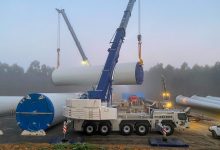Somebody better tell the prime minister, and his advisors. On Monday, Scott Morrison was still singing the praises of coal generators and the concept of baseload, saying he wanted the polluting plants to continue as long as they could. He even said he’d be happy if someone came up with the cash to build a new one.
It’s hard to imagine a comment more divorced from the reality of Australia’s rapidly transitioning energy system. The market operator believes it is possible that all brown coal generation may be gone within a decade, and most of the industry agrees.
Under some scenarios, that many believe will emerge as the most likely within a few years, all coal generation will be gone within that time.
And to underline that point, Origin Energy, the owner of the country’s largest coal generator at Eraring, has brought forward its planned closure date from 2032 to 2025. It will mean the end of baseload for what is, under some key metrics, Australia’s biggest energy utility.
In an interview with RenewEconomy’s popular Energy Insiders podcast this week, Origin CEO Frank Calabria says it is clear that the energy system is moving away from coal at a speed that few anticipated.
And, he says, the system is also moving away from the concept of baseload, and switching instead to versatile and dispatchable technologies that include battery storage, pumped hydro, peaking gas, demand management, and virtual power plants that tap into assets, such as rooftop solar, batteries and EVs, owned by customers.
It’s an important point, because while some may admit, reluctantly, that coal is dead, they remain deeply attached to the concept of “baseload” as the key to 24/7 power. As long as that thinking prevails among policy makers and regulators, it will be harder to move forward with the transition to a zero emissions grid.
“There are better technologies able to be brought together to achieve the same outcome,” Calabria tells the Energy Insiders podcast.
“And therefore, as renewable energy through wind and solar grows, what we will have is peaking gas plants. They’ll operate over days and weeks when you need that peak capacity to protect the system, and to be reliable.
“And then there will be a combination of battery storage that moves energy around on the day that operates in conjunction with renewables.
“There’ll be hydro storage. And what we’ve also introduced is the ability to match supply and demand through a virtual power plant. You need the combination all of those to come together to work.”
Origin’s decision to close Eraring so quickly took many by surprise, given that coal generators are often jostling to be the last one out of the grid, in expectation that they could maximise profits that way.
Calabria disagrees.
“I think it was good for us to go first,” he said. “First, from a strategic point of view, it creates a lot of white space for both bringing energy and capacity in and also negotiating how we might think about third-party contracts alongside building that.
“I personally believe that you don’t want to be on the wrong side of that equation, the paradigm of the market will shift. I know it’s uncertain, we’re seeing very high commodity prices today that are driving a particular dynamic.
“But I’ve got no doubt in my mind in the future, this market will be dominated by low short-run marginal cost, renewable energy, that will be moving in and out in a day.
“And you want a very flexible portfolio of capacity that can respond instantaneously, including things like demand response, as well as batteries.
“So I personally believe that … you want to be moving earlier. And that’s about positioning our portfolio because I can genuinely see that being a more efficient set of assets, less capital intensive, less fixed cost, and better designed to work together than then having coal stay in there longer at a very high fixed cost running as a peaker and intermediate asset.”
Calabria also discusses the strategy for renewable energy procurement, similar to the Stockyard Hill wind farm that Origin has contracted (see pic above), and the outlook for big batteries and pumped hydro.
You can listen to the interview in full on the Energy Insiders podcast here.










